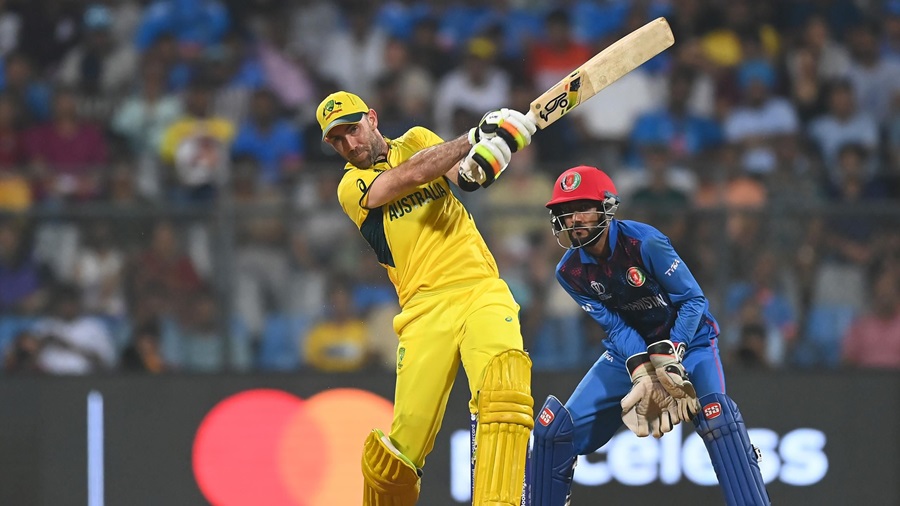Like Golf, Cricket is definitely not a game of Perfect.
Peter Procopis | May 22, 2024

A few years ago, I was fortunate enough to have an exchange with Greg Chappell about cricket. Greg suggested that the next frontier in performance would be in mental skills. I've been reflecting on that exchange recently. Through the prism of my two favourite sports, golf and cricket, the article below discusses the value of accepting imperfection while pursuing mastery. As usual, I encourage you to share your thoughts.
Like Golf, Cricket is definitely not a game of Perfect.
Dr Bob Rotella’s book, Golf is not a game of Perfect, contains numerous gold nuggets of wisdom for anyone serious about improving their sporting performance.
The title of the book was inspired by a quote delivered by Tom Kite, one of Rotella’s star pupils of the 1980s and 1990s. Kite won 19 times on the US PGA Tour, including the 1992 US Open. Renowned for his resilience and ability to extract every ounce of performance out of himself, Kite was the Tour’s leading money-winner in both 1981 and 1989. The quote reflects Kite’s view that golf is fundamentally about getting the ball into the hole in the fewest strokes possible. It was an acknowledgment that you’re more likely to shoot your lowest score if you come to grips with the idea that even on your best days you’re going to play imperfectly.
Rotella cites Kite’s mindset as the key to his sustained success. That mindset involved a relentless pursuit of mastery tempered by an acceptance that mistakes would be made along the way. Rotella observed Kite successfully marry those two ideas to extract peak performance more often than most. Kite was a master of using his physical and mental routines to prepare for each shot confidently. He would then “let the shot go.” Soon thereafter he would accept the result regardless of whether he had knocked it close; hit it into a hazard; or anything else in between.
Rotella points out that top-flight golfers like Kite believe that the success of golf shots depends mostly on pre-shot preparation. Top flight professionals, like Kite, and even plenty of strong amateur golfers, have sound, grooved swings. Once golfers have a sound enough swing, Rotella contends that the key to consistency and success is marrying a sound physical routine with an effective mental routine: a set of mind steps golfers take in conjunction with their physical routine (setting up their stance, waggling etc) to get into their best performance state. After performing those twin routines well, the golfer can then simply focus on their target and let their skill take over.
According to Rotella, a vital element of champion golfers’ mindsets is the ability to accept that even the greatest rounds ever played involve several ‘mistakes.’ In one of his other books, Golf is a game of Confidence, Rotella takes the reader through Brad Faxon’s record-low final round 63 on the Sunday of the 1995 USPGA at Riviera Country Club. Faxon produced some of the best golf ever played that day on a very tough course in the heat of a battle for one of Golf’s four majors. Afterwards, Faxon provided a shot-by-shot summary of his thoughts, feelings and decisions for each of the shots he played during that round to Rotella. Whilst Faxon did most things right that day, he also described numerous all-too-human mental mistakes across the round, which led to missed fairways, missed Greens and missed putts. Let that sink in for a moment. Arguably, no one has ever played a better final round in one of golf’s venerated majors, and yet Faxon admits it was far from ‘the perfect round.’ Of course, that’s because there is no such thing- just as there is no such thing as the perfect innings in Cricket or the perfect offensive game in Basketball.
Rotella explains that one of the key qualities that separates the great players from good players is how well the great players accept and move on from imperfect shots. The best players develop a mindset that breaks their performances up into small, bite-sized moments. They pour their effort into that key period immediately prior, during, and immediately after each shot. And they actively reject the temptation to expend any energy on regrets or lamentations. They permit themselves only a few moments of annoyance after an errant shot, and then use their routines to recover swiftly in order to be ready to potentially hit the best shot of their life immediately thereafter. Indeed, they pride themselves on those resilient moments, like flushing a smooth 7 iron to 10 feet after missing a 4-foot putt for par on the previous green.
That marriage between the ongoing pursuit of mastery on one hand and the acceptance of imperfection on the other can be a powerful performance combination for cricketers too. Contrary to most media summaries and commentary, top shelf batting performances, truly great innings, are very much a combination of mostly brilliant play, mixed with a few mistakes, and a touch of fortune here and there.
If time’s aplenty for you, I encourage you find a Test century compiled by one of your favourite batters on YouTube; set up a recording table in an exercise book or on a laptop; settle on some ball-by-ball ‘performance’ headings; and watching every ball, tally up what you might call Mistakes; Reasonably played deliveries; and Superbly played deliveries. If, on the other hand, time’s a bit tighter for you, do a similar exercise on Glen Maxwell’s brilliant, ODI World Cup double century. Many pundits have labelled it one of the greatest innings ever played. See how many times Maxwell actually got things spot on; how many times he did enough to stay in and keep the score ticking over; and how many times he got away with mistakes. Did he play a range of brilliant shots? Was he dropped after making a mental error and playing a poor shot? Did he mishit a bunch of shots?
The best batters know that like golf, cricket is not a game of perfect. They play along with the glowing media accounts of their flawless batting brilliance for various rational reasons- it’s in their professional and personal interests to do so. But privately they know that the real game is about grit, determination, practice and preparation. They practice more purposively than most and they prepare more thoroughly. And like Tom Kite and many other golfers like Brad Faxon, Davis Love III and even Rory McIlroy, who have worked with Dr Rotella, they build a performance routine that marries a set of physical movements to a set of mental steps. Those steps create the opportunity to achieve peak performance at each of the many ‘moments of truth’ that make up a round of golf or an innings in cricket.
Those top performers also frequently use a post-shot strategy similar to that advocated by Kite and Rotella: first, acceptance of the results; then a few brief moments of expression and reflection; and finally, a quick shift to leave that event behind and get on with being in the best state possible to deal with the next ball. Former international all-rounder, Shane Watson, in Winning the Inner Battle, described his conversion to that type of mindset towards the end of his career. Watson described the Eureka moment when he finally uncovered the prime reason for his inconsistency at the highest level over many years: the lack of a consistent, effective mental routine. Watson openly attributes much of his subsequent success during the twilight of his career to his improved mental game. In particular, he explains how he finally came to grips with the idea that performance was a combination of preparation, skill, applied effort, a degree of fortune and a stoic acceptance of imperfection.
The notion that like Golf, Cricket is most certainly not a game of perfect should be liberating for players of all standards. If batters can, for example, like Tom Kite, successfully marry the relentless pursuit of mastery with the idea that every training session and innings will involve mistakes, they will consequently free themselves up to produce greater performances. More of their finite energy stores will be spent focusing on ‘controllable’- those mental and physical processes that set them up to win the numerous mini-battles that make-up their involvement in a match- and less on ‘uncontrollable’- those things that distract players and consequently detract from performance. Damaging, energy-sapping regrets and lamentations about what could have, or should have been, will be reduced and players will re-focus back on the basic tasks at hand more swiftly.









The subconscious mind is the most important part in an athletes sporting performance and is grossly neglected and misunderstood. The elite of all athletes have mastered it but a majority of those don't know why or how they did. As a self sabotage coach that specialises in sub conscious reprogramming it is important to remember that there is only three ways to change the subconscious mind..extreme trauma eg an event, repetition and self/external hypnosis. In cricket terms most players (especially batsmen) develop negative, repetitive patterns of behaviour by being taught these by poor coaching and mentoring from people that don't understand the subconscious mind. Modern coaches focus and are trained to focus on the conscious mind (technique). As this article referred to Bob Rotella who is an expert in sporting psychology the most important thing an athlete can focus on is developing and training their sub conscious mind. It is a record/playback system so under pressure players need to practice the art of accessing the subconscious mind (the zone) by simple techniques such as breathing and focusing on the smallest target possible as that is what the sub conscious brain orientates to. The trick is to have the subconscious mind trained well so so when an athlete accesses this under pressure he has positive repetitive patterns of behaviour to call on. Much like NEO in the Matrix when he is programmed with Kung Fu. Hindsight is a wonderful thing, I would completely retrain my thinking processes of when I played. I got back into golf at 40 and using Rotella's techniques and my own studies of the sub conscious mind and self hypnosis I got myself playing golf off plus 2 with zero technical coaching whatsoever. Anyone can do it.